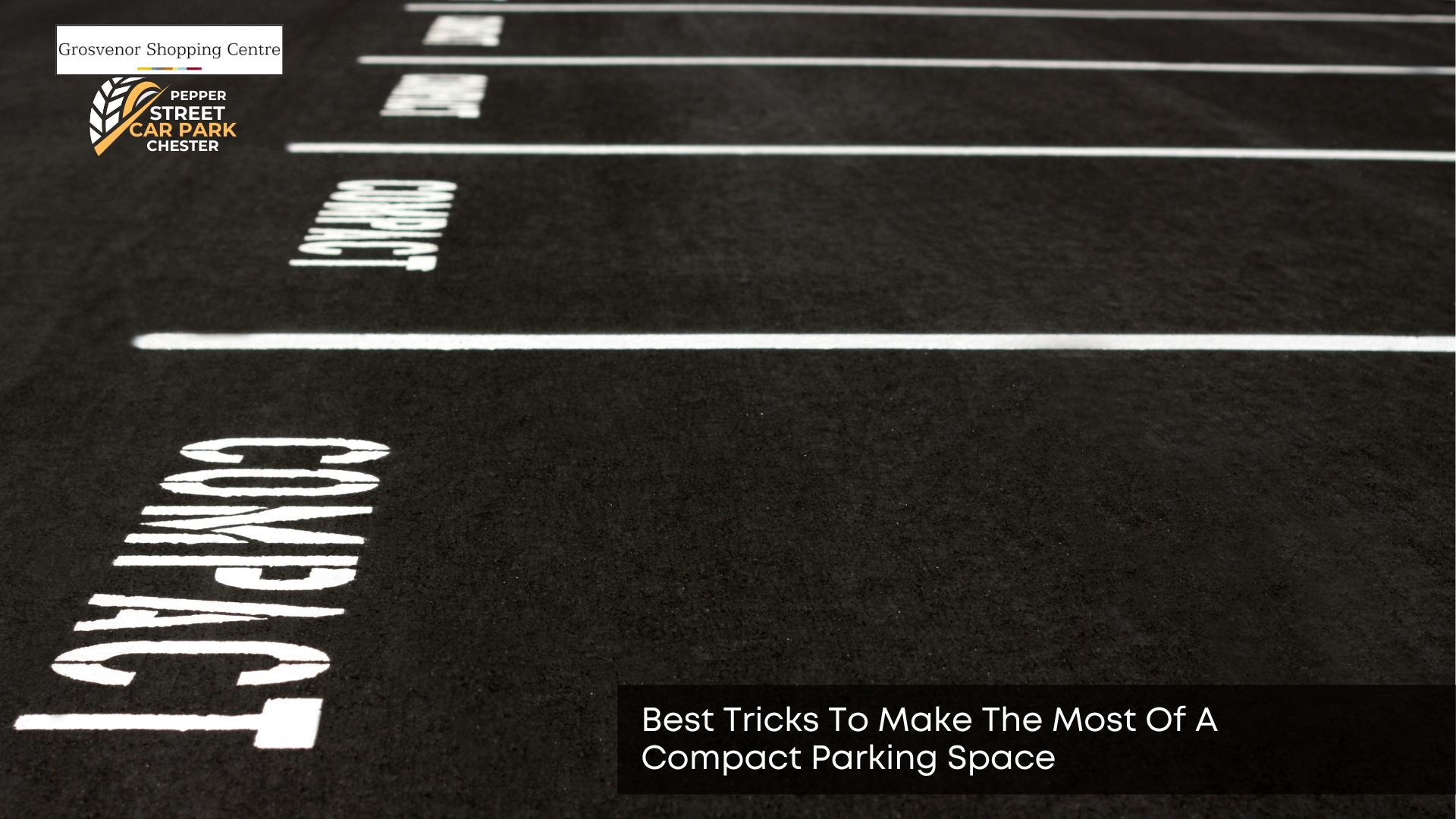Compact parking spaces are a common sight in busy towns, shopping centres and residential areas. They save space but also demand sharper skills and greater attention from drivers. Knowing how to handle these tight spots can make every journey smoother and less stressful. In this article, we share the best tips to help you make the most of a compact parking space, whether you drive a small car or are trying to fit a larger one into a tight spot.
What Is a Compact Parking Space?
A compact parking space is a smaller-sized bay designed mainly for small and medium cars. These bays are often found in tight car parks where space is limited, such as city centres or underground garages. They are usually narrower and shorter than standard spaces, which makes parking more challenging. Signs or paint often mark them. This smaller size is why extra care is needed when parking in them.
Why Do Compact Spaces Require More Care?
Compact spaces require more care because there’s less room to manoeuvre and a higher chance of bumping into walls or other vehicles. A small error in judgement can lead to scratches, blocked doors or awkward exits. These spaces also demand slower, more controlled movements to avoid touching bay lines or nearby objects. This extra caution helps reduce the risk of damage. Before you begin parking, it’s a good idea to assess the fit.
How Can You Judge If Your Car Will Fit?
You can judge if your car will fit by comparing the bay size with your car’s length and width as you approach. Use visual cues, such as the amount of space left on each side or whether nearby vehicles are parked closely. Some car parks provide size signs or labels that indicate whether the space is for compact use only. Taking a few seconds to assess saves time and avoids the stress of re-parking. Once you’re sure, alignment is your next step.
What’s the Best Way to Align Your Vehicle Before Entering?
The best way to align your vehicle is to straighten it early and keep an even gap on both sides as you approach the space. Line up with the centre of the bay and make sure your wheels are pointing straight before moving in. Use the white lines as your guide and go slowly to adjust as needed. Good alignment from the start makes the rest of the parking process smoother. Your choice of entry direction also matters.
Should You Reverse or Drive Forward Into a Compact Space?
Reversing into a compact space is usually better because it gives you more control and a clearer view when you leave. Rearview mirrors and sensors are more effective during reversing, and it’s easier to steer into place. Driving forward may seem quicker, but reversing out later can be more difficult in tight areas. Choosing to reverse also helps with mirror placement, which supports accuracy and precision.
How Do You Adjust Mirrors for Better Parking Accuracy?
To adjust mirrors for better accuracy, tilt them slightly downwards so you can see the bay lines and any low obstacles. This view helps you stay centred and avoid crossing the lines. Fold them out fully before starting, and if your car has an automatic tilt for reversing, use that setting. Proper mirror use makes a huge difference in tight conditions. Additional tools, such as sensors, can provide even more assistance.
What Role Do Parking Sensors and Cameras Play?
Parking sensors and cameras play a key role in compact spaces by giving real-time feedback on distance and obstacles. Sensors beep as you approach objects, while reversing cameras display exactly where your car is heading. This added visibility reduces guesswork and improves safety. Many cars now combine both tools for better control. Even with tech, steering skill still matters.
Can Steering Techniques Help You Park More Precisely?
Yes, careful steering makes a big difference when parking in small spaces. Turn the wheel smoothly and avoid rushing the turn or overcorrecting too early. Start turning once your rear wheels are near the bay line, and make small adjustments as you go in. Knowing how your car responds to steering will help you judge tight turns more effectively. Once parked, getting in and out of the car becomes the next concern.
How Can You Open Doors Without Hitting Nearby Vehicles?
To open doors safely in a tight space, open them slowly and use your hand to guide the edge, avoiding contact with nearby vehicles. If you’re too close to open the door fully, consider getting out before finishing the final parking move. For four-door cars, remind passengers to be extra cautious. This extra care also makes leaving the space less risky.
Are There Tricks to Help You Exit Tight Spaces Smoothly?
To exit smoothly, turn your wheels while the car is still stationary, and then check all mirrors before moving. Pull out slowly to avoid catching nearby cars or kerbs, and use sensors or cameras to monitor the space around you. If you reverse in, exiting forward is usually easier and quicker. Avoid sharp turns until your car is clear of the bay. Mistakes during exit can often undo the benefits of good parking, so attention remains key.
What Mistakes Should You Avoid in Compact Parking Areas?
Avoid rushing, swinging wide, or using too much speed when entering or leaving a compact space. Don’t park over the lines or too close to another vehicle, as this can block others from getting in or out. Ignoring mirrors or relying solely on sensors can also lead to accidents. Practising good habits prevents frustration and makes you a more confident driver. Good habits matter most in compact parking bays that demand precision and care.
How Can Compact Parking Be Safer for Everyone Around You?
Compact parking becomes safer when all drivers follow the rules, park within the lines, and move carefully. Use indicators, check surroundings, and wait patiently if someone else is adjusting their car. Respecting space and avoiding sudden movements helps prevent scratches, collisions, or confusion. A little patience goes a long way in small areas. Some tools and gadgets can also help improve your results. Honing your skills helps reduce the risk of private car park fines in tight spaces.
What Tools or Gadgets Make Compact Parking Easier?
Helpful tools include parking sensors, reversing cameras, foldable mirrors, and even small bumper guards for added safety and protection. Some cars have automatic parking features that handle steering for you. You can also use reflective markers in home garages to guide your position. Choosing the right gadgets depends on your car and your budget. Regardless of the tools, it is practice that brings confidence.
How Can You Practise and Improve Your Compact Parking Skills?
You can practise in an empty car park using cones or markers to simulate tight spaces. Try reversing into bays from different angles, focusing on mirror use and steering control. Practice slowly and repeat often to build muscle memory and reduce stress when parking in real situations. Over time, you’ll gain confidence and precision. With these skills in hand, compact parking becomes far less daunting. A little patience goes a long way in city centre parking where visibility and layout support safer movement.


Leave a Reply